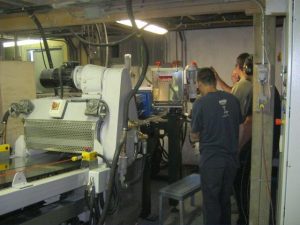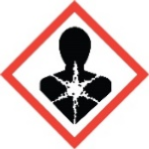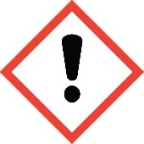
Erie Powder Coatings NewsletterSeptember 2016
Health And Safety
Health and Safety issues are very important to companies.
There are of course the legal ramifications in having health and safety issues or problems—fines, suits, etc.
There are the problems of dealing with the government health and safety authorities. These authorities are extremely difficult to deal with when things are going well and they are simply doing a random inspection—but these dealings are far worse if a problem has occurred.
But most importantly, the vast majority of customers that Erie deals with – including managers, owners right down to the line employees – care about their co-workers. And none of them want to see a co-worker hurt or diagnosed with an illness.
With that in mind, we would note:
- Costs of Health And Safety – Equipment, procedures design and employee training can cost a lot of money. But a single problem with an employee can cost much more.
- Legal Requirements – Every jurisdiction—local, state, province, federal, has different rules and regulations. However, these are only minimums that must be followed, and a good health and safety program will often require going well beyond the minimums
- Implementation – H&S procedures can be difficult to implement — but once in place and the training done, most employees will find it easy to follow these procedures.
“Good health and good sense are two of life’s greatest blessings.
Publilius Syrus
In This Issue
- H&S info
- Product spotlight P7008-T7 9016 Tex
- EPC News
- Technical Corner: focus on H&S
- GHS info
Product Showcase: P7008-T7 9016 White Text
This product is matched to RAL 9016, the cleanest “whitest” of the RAL white grouping. The P7008-T7 is a standard durable polyester, excellent for exterior durable requirements.
This product has a rolling (river) type of texture finish. Erie’s rolling texture system is the best we have seen on the market. These types of products are often subject to real problems with inconsistent texture and pinholing or cratering to the substrate surface.
Our lab spent months to deliver a rolling texture system that is extremely consistent and “bulletproof” as possible.
Call us today if you would like more information on this product, or a sample.
Erie’s P7008-T7 9016 White Text— ask your sales rep or call our office
EPC News
 We’re still hiring Erie has been developing business very nicely, and along with that comes demands for extra work in our production area. We have been continuing to add more people to our production area in an effort to service our customers better.
We’re still hiring Erie has been developing business very nicely, and along with that comes demands for extra work in our production area. We have been continuing to add more people to our production area in an effort to service our customers better.
Laboratory Upgrade at the North East facility EPC continues work on the lab facilities at the North East facility. We are now getting very close to start-up operations and testing on this new lab.
Production Upgrade at the North East facility: The work in our US manufacturing area is complete, and working well. We are already seeing improvements in production efficiency.
Safety Training
Health and Safety training is costly and time consuming for both the workers and trainers, or if those services are provided by outsiders, those responsible for organizing the sessions.
 However, remember what is really expensive? Failing a government authority safety audit.
However, remember what is really expensive? Failing a government authority safety audit.
Or even more costly for both time and money, an employee hurt on the job. On top of this, safety incidents can cause real worker morale issues.
So while H&S training can cause some headaches, not doing it can cause many more.
There are often government tax credits, resources and even grants for training, safety or otherwise, which can often offset or at least minimize up-front training costs .
Technical Corner
Are your Powder Coaters safe?
Twenty years ago painting was a dangerous job.
Solvent based coatings were common and many were applied using electrostatic spray equipment. This required painters to exercise extreme caution when working with solvents. One spark could lead to a serious injury or even death. The PPE (Personal Protective Equipment) required to apply these coatings usually included a half mask respirator, safety glasses, neoprene gloves and a Tyvek or flame retardant suit. This equipment was cumbersome for the painters and could be quite expensive for the company. The hazardous waste generated from the use of this type of coating was highly flammable and difficult to dispose of.
Eventually water borne coatings were developed and slowly began to replace solvent based paints. Unfortunately these coatings came with a whole new crop of hazards including: co-solvents which could introduce toxins directly into the blood stream, the possibility of electrocution if using electrostatic equipment that was not properly isolated, and a new type of hazardous waste which was much more expensive to dispose of than its solvent based predecessor.
We can all agree powder coatings are much safer to apply than solvent based or even water base liquid paints.
They contain no volatile organic content, cleanup easily without solvents, and have virtually no hazardous ingredients requiring special handling for proper disposal.
But there are some hazards to consider.
For example: Inhalation of powder coating dust can lead to respiratory problems. TGIC (triglycidyl isocyanurate), a component of Polyester powder coatings, is a known mutagen and sensitizer, and abrasive powder coating particles can irritate the skin and eyes.
To help mitigate these hazards, OSHA recommends maintaining an exposure level of less than 10 mg/m3 of inhalable particulates in an 8 hour shift.
This can be done easily with proper ventilation, good housekeeping practices and the use of some relatively inexpensive PPE (Personal Protective Equipment).
So why is it I have observed so many powder coaters working in unsafe conditions?
I visit hundreds of powder coating operations throughout the year and have noticed some disturbing things. I routinely see powder coaters spraying in short sleeves without safety glasses or dust masks. Some operations do not even have a proper spray booth! This type of reckless behavior could not only lead to illness over the long term but could also result in some serious fines if OSHA comes to town.
Please take the time to explain to your employees the potential hazards associated with powder coating and be sure to provide them with and enforce the use of the proper PPE.
At a minimum be sure your employees wear a dust mask, safety glasses and protective clothing. Make sure your spray booths are working properly and your equipment is properly grounded. Keep work areas clean and routinely vacuum the top of conveyor lines, ovens, and spray booths to prevent the buildup of dust and debris. A clean work area will not only keep your employees safer and healthier, it will likely lead to fewer rejects and improve efficiency.
For more information on safety regulations, law and general information, visit
Bob Whitman
Sales Manger, USA
Continuing Education— General info on powder coatings.
Continuing Education
General Information on GHS
This I our ongoing series on educational information for coaters and users of powder coating.
NOTE: We have shared this information in the past with many customers, and put some of this info on our website. However, we have found many of our customers are still not familiar or even aware of the implementation of GHS across N America. In this light, we have put forward this information on the GHS system in our newsletter
Companies all over N America are dealing with new rules and regulations dealing with safety data and how that information is conveyed to customers. New Data sheets and labels are (or will be) required of suppliers under the new GHS system.
Different countries around the world have had different hazard communication systems in place for safety communication about hazardous chemicals. Often, these systems have been coordinated so that they are recognizable in many different countries and consisted mainly of training, a MSDS, and product labels. Just the same, there were often significant differences in the format and information on these safety communications from region to region, country to country.
In an effort to standardize hazard communications, the UN along with a number of experts created a new change in safety communications for workplaces, the GHS (Globally Harmonized System of Classification and Labeling of Chemicals).
This is set to standardize classification of chemicals and their associated health, physical and environmental hazards, as well as the communication of these hazards through safety data sheets and labels.
The GHS has been formally and legally adopted by the United States, Canada and Mexico. The timelines for implementation vary from country to country, but OSHA in the United States had set a date of June 1, 2015 for full implementation of this system by chemical suppliers and manufacturers.
Implementation in Canada is taking place from 2015 to mid 2017.
GHS Components
To implement the GHS, Erie / EPC has worked diligently through the legislation to make sure that our products and shipments will meet the requirements of the new legislation. To satisfy the requirements of the GHS, you will see the following components have changed from the “old” MSDS/WHMIS system.
Labeling:
In the past, safety information at EPC was printed directly onto the box. This included general safety information and a reference to view the MSDS. For the new GHS compliant labels: Chemical manufacturers and importers must provide a label that includes a signal word, pictogram, hazard statement, and precautionary statement for each hazard class and category. This information will differ in format from the previous labels. The content, with some exceptions, is basically unchanged, but the format has become very important and standardized.
The labels will include:
Signal Word: The signal word is either “DANGER” for more severe hazards, or “WARNING” for less severe hazards. In general, the powder coatings that Erie / EPC ships will be labeled with “WARNING”
Pictograms: These are visual representations of the hazard, and are defined by the legislation. OSHA has mandated that these are printed in color on the labels.


For a complete list of pictograms, please go to
https://www.osha.gov/dsg/hazcom/pictograms/index.html
Hazard Statement: Hazard statements list a summary of the hazards associated with the product or ingredients in the product.
Precautionary Statement: The precautionary statement is a summary of the recommended practices and measures to reduce or minimize the adverse effects of the product in the workplace.
Safety Data Sheets:
Along with the change in the labeling of chemicals and products, the Safety Data Sheets are also revised for the GHS. Previously, information was communicated on Material Safety Data Sheets (MSDS). With the GHS, this has been changed to a Safety Data Sheet (SDS).
The classification, and communication of the data has been standardized so that the presentation of the information is common from SDS to SDS. For example on MSDS sheets, there were frequently 9, 10 or 16 sections to the sheet, and no defined order of the sections. With the SDS, the name of each section, the order of the sections, and the number of sections are all defined by the GHS and should be common on all SDS from all suppliers. The aim of this is to allow easier identification and discovery of the information contained in the SDS.
While there are format and information changes on the SDS compared to the MSDS, the two systems are similar enough that most persons who are familiar and trained on MSDS sheets will easily recognize the data and communication information on a SDS.
Training:
Training for the new system is essential. Legislation in both Canada and the USA has stipulated that workers be trained in the new system.
Implementation of GHS at Erie Powder Coatings / EPC Powder Mfg.
Customers of EPC / Erie Powder have been receiving the new labels and the new SDS sheets for now most of the last year. Erie / EPC has fully implemented the new system since 2015.
Information Change does not mean Product Change
Last, please note, the information and communication of hazard information is being revised by our company to meet legislation on GHS. However, the hazards associated with our products, and the products themselves are not changing.
More info from OSHA on GHS can be found here:
https://www.osha.gov/dsg/hazcom/
If you have any questions or concerns, please don’t hesitate to contact your sales rep or our office.
Contributing to this Newsletter

Brian Coutts is President and founder of Erie Powder Coatings EPC. Brian is a chemical engineer, Queen’s University in Kingston and is a proud father of three .
Phone: 905-957-4086
Email: bcoutts@eriepowder.com

Bob Whitman is sales manager at EPC covering PA, NY and the Midwest states. Bob has extensive experience in powder and coatings in general. Previously Bob ran a powder line and worked in liquid coatings
Phone: 814-725-2012
Email: rwhitman@eriepowder.com
